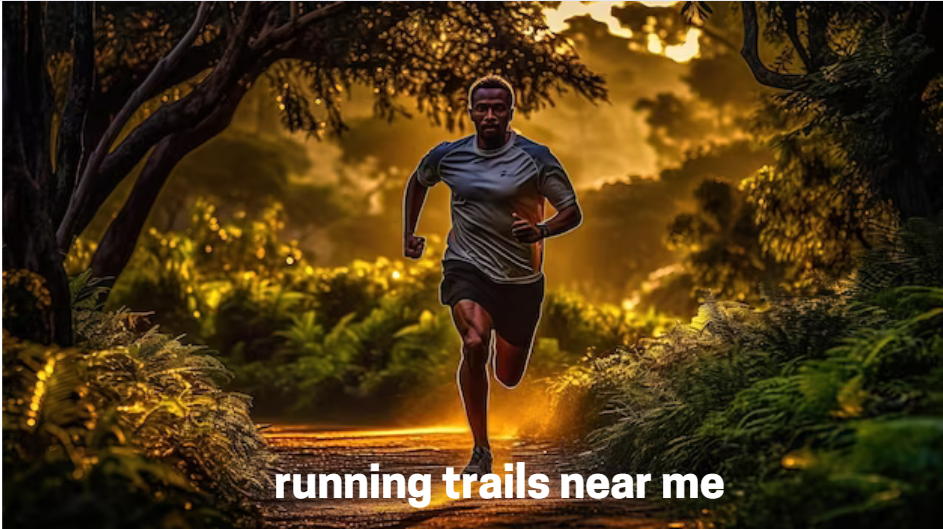When searching for “running trails near me,” it can be overwhelming to sift through the myriad of options available across the USA.
This comprehensive guide aims to provide runners, whether beginners or seasoned marathoners, with the best trails in their vicinity. By focusing on quality over quantity, we’ve curated the most scenic, well-maintained, and accessible running trails across the country.
Contents
- 1 Why Running Trails Matter
- 2 How to Find the Best Running Trails Near Me
- 3 Top Running Trails Across the USA
- 4 Benefits of Running on Trails
- 5 Essential Gear for Trail Running
- 6 Tips for Safe Trail Running
- 7 Environmental Etiquette
- 8 Conclusion
- 9 Frequently Asked Questions (FAQs)
Why Running Trails Matter
Running trails offer a unique experience compared to urban streets or treadmills. They provide a connection to nature, reduce the impact on joints compared to hard pavement, and often come with stunning scenery that can make a run feel more like an adventure. Moreover, running in natural settings has been shown to reduce stress and improve mental well-being.
How to Find the Best Running Trails Near Me
Finding the best running trails near you involves a combination of online research, local knowledge, and personal preferences. Here are some tips:
- Use Trail-Finding Apps: Apps like AllTrails, TrailLink, and MapMyRun provide extensive databases of running trails with user reviews, photos, and difficulty ratings.
- Local Running Groups: Joining a local running club or group can provide insider knowledge on the best trails.
- Social Media: Platforms like Instagram and Facebook often have groups or hashtags dedicated to local running communities.
- City and State Parks Websites: These often list trails with detailed information and maps.
Top Running Trails Across the USA
East Coast
1. Appalachian Trail (Various States)
- Length: 2,190 miles (though you can run shorter segments)
- Highlights: Scenic vistas, diverse ecosystems, challenging terrain
- Accessibility: Trailheads in Georgia, North Carolina, Tennessee, Virginia, Pennsylvania, New Jersey, New York, Connecticut, Massachusetts, Vermont, New Hampshire, and Maine
2. Central Park (New York, NY)
- Length: 6 miles (loop)
- Highlights: Iconic NYC scenery, well-maintained paths, year-round accessibility
- Accessibility: Easy access via public transportation
Midwest
3. Lakefront Trail (Chicago, IL)
- Length: 18.5 miles
- Highlights: Views of Lake Michigan, skyline views, multiple access points
- Accessibility: Easily accessible from various parts of Chicago
4. Minnehaha Parkway (Minneapolis, MN)
- Length: 5.5 miles
- Highlights: Minnehaha Falls, tree-lined paths, connections to other trail systems
- Accessibility: Accessible by car and public transport
West Coast
5. Bay Area Ridge Trail (San Francisco, CA)
- Length: 550 miles (under development, with many completed segments)
- Highlights: Panoramic views of the Bay Area, diverse landscapes
- Accessibility: Multiple access points around the Bay Area
6. Griffith Park (Los Angeles, CA)
- Length: Various trails totaling over 53 miles
- Highlights: Hollywood Sign, Griffith Observatory, diverse flora and fauna
- Accessibility: Accessible by car, with parking available
South
7. Lady Bird Lake Hike-and-Bike Trail (Austin, TX)
- Length: 10 miles
- Highlights: Scenic waterfront, downtown Austin views, shaded paths
- Accessibility: Easily accessible from downtown Austin
8. Shelby Farms Greenline (Memphis, TN)
- Length: 10.65 miles
- Highlights: Urban greenway, connections to Shelby Farms Park, shaded paths
- Accessibility: Multiple entry points, parking available
Benefits of Running on Trails
Running on trails provides numerous physical and mental benefits:
- Lower Impact: Softer surfaces reduce the stress on joints.
- Varied Terrain: Enhances balance and engages different muscle groups.
- Mental Health: Exposure to nature reduces stress and improves mood.
- Scenic Motivation: Beautiful surroundings can make runs more enjoyable and motivating.
Essential Gear for Trail Running
Trail running requires some specific gear to ensure safety and comfort:
- Trail Running Shoes: Provide better grip and support compared to road-running shoes.
- Hydration Packs: Essential for longer runs, especially in remote areas.
- Weather-Appropriate Clothing: Layering is key for changing weather conditions.
- Navigation Tools: GPS watch, trail maps, or a reliable trail app.
- Safety Gear: First aid kit, whistle, and a headlamp for early morning or evening runs.
Tips for Safe Trail Running
- Know the Trail: Study maps and read reviews before heading out.
- Check the Weather: Avoid trails in extreme weather conditions.
- Stay Visible: Wear bright clothing and consider a headlamp if running in low light.
- Stay Hydrated: Carry enough water and know where refill points are located.
- Run with a Buddy: If possible, run with a partner for safety.
Environmental Etiquette
- Stay on Marked Trails: Prevents erosion and protects local flora and fauna.
- Pack It In, Pack It Out: Carry all trash out with you.
- Respect Wildlife: Observe from a distance and do not feed animals.
- Yield to Others: Allow faster runners or uphill runners to pass.
Conclusion
Finding the best “running trails near me” can transform your running routine into an exciting adventure. The USA offers an abundance of trails that cater to all levels of runners, from urban paths to rugged mountain trails.
By utilizing resources like trail apps, local running groups, and city websites, you can discover the perfect trail that suits your preferences and fitness level. Remember to prioritize safety, respect the environment, and enjoy the countless benefits that trail running has to offer.
Frequently Asked Questions (FAQs)
1. How can I find running trails near me?
You can use trail-finding apps like AllTrails, TrailLink, and MapMyRun, join local running clubs, check social media groups, or visit city and state parks websites for detailed information on local trails.
2. What should I bring on a trail run?
Essential gear includes trail running shoes, a hydration pack, weather-appropriate clothing, navigation tools, and safety gear such as a first aid kit and a whistle.
3. Are there any safety tips for trail running?
Yes, know the trail, check the weather, stay visible, stay hydrated, and consider running with a buddy. It’s also important to carry a first aid kit and a headlamp if running in low light conditions.
4. What are the benefits of trail running?
Trail running offers lower impact on joints, varied terrain for better muscle engagement, mental health benefits from nature exposure, and scenic surroundings that can make running more enjoyable.
5. What is the best way to stay motivated while trail running?
Choosing scenic trails, running with a group, setting personal goals, and mixing up your routes can help keep your trail running routine exciting and motivating.





















+ There are no comments
Add yours